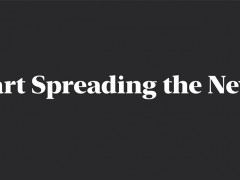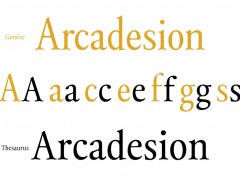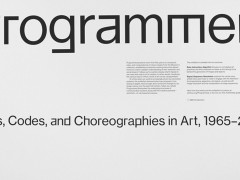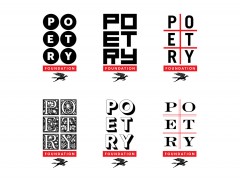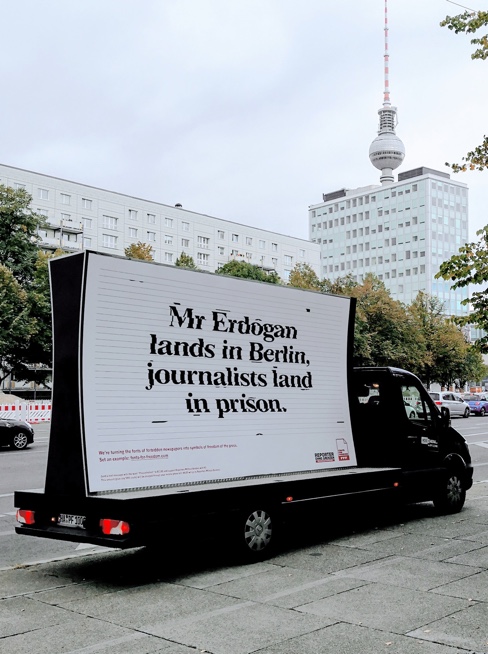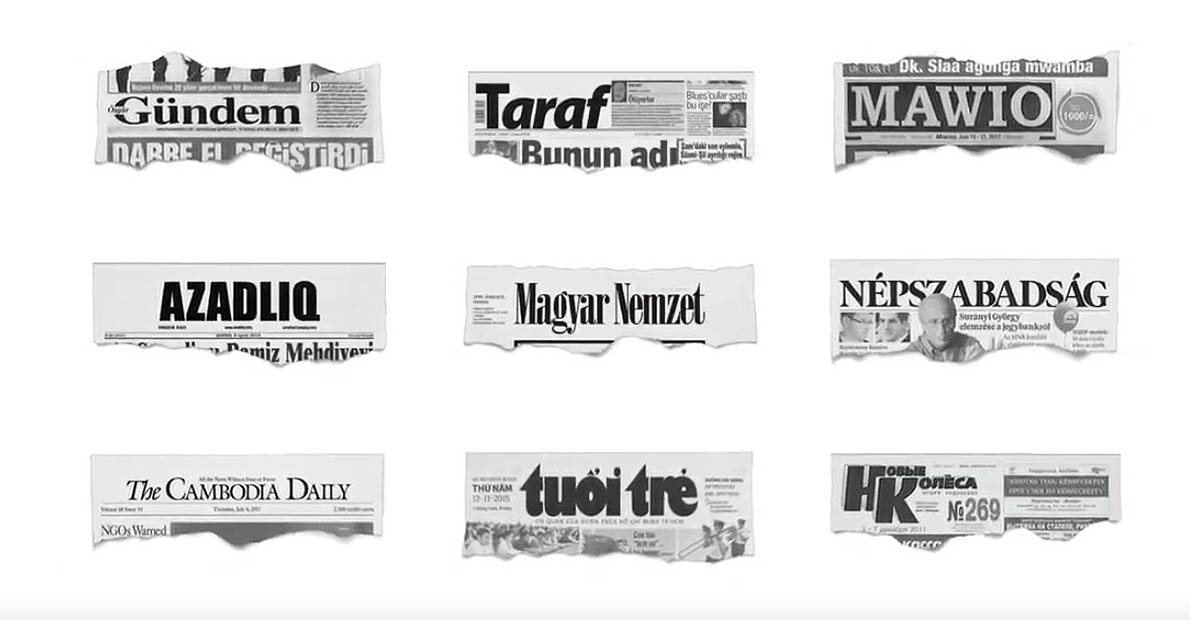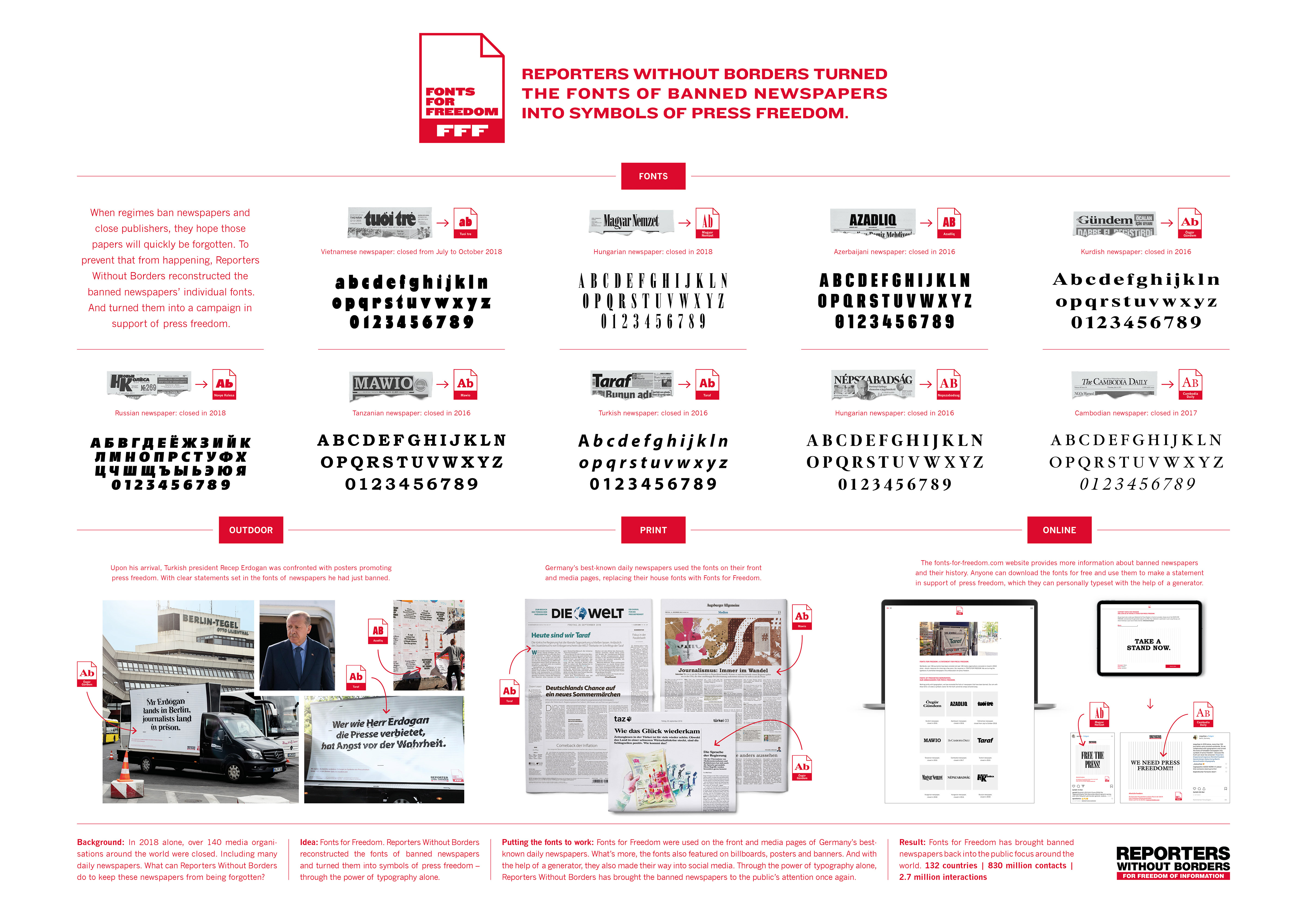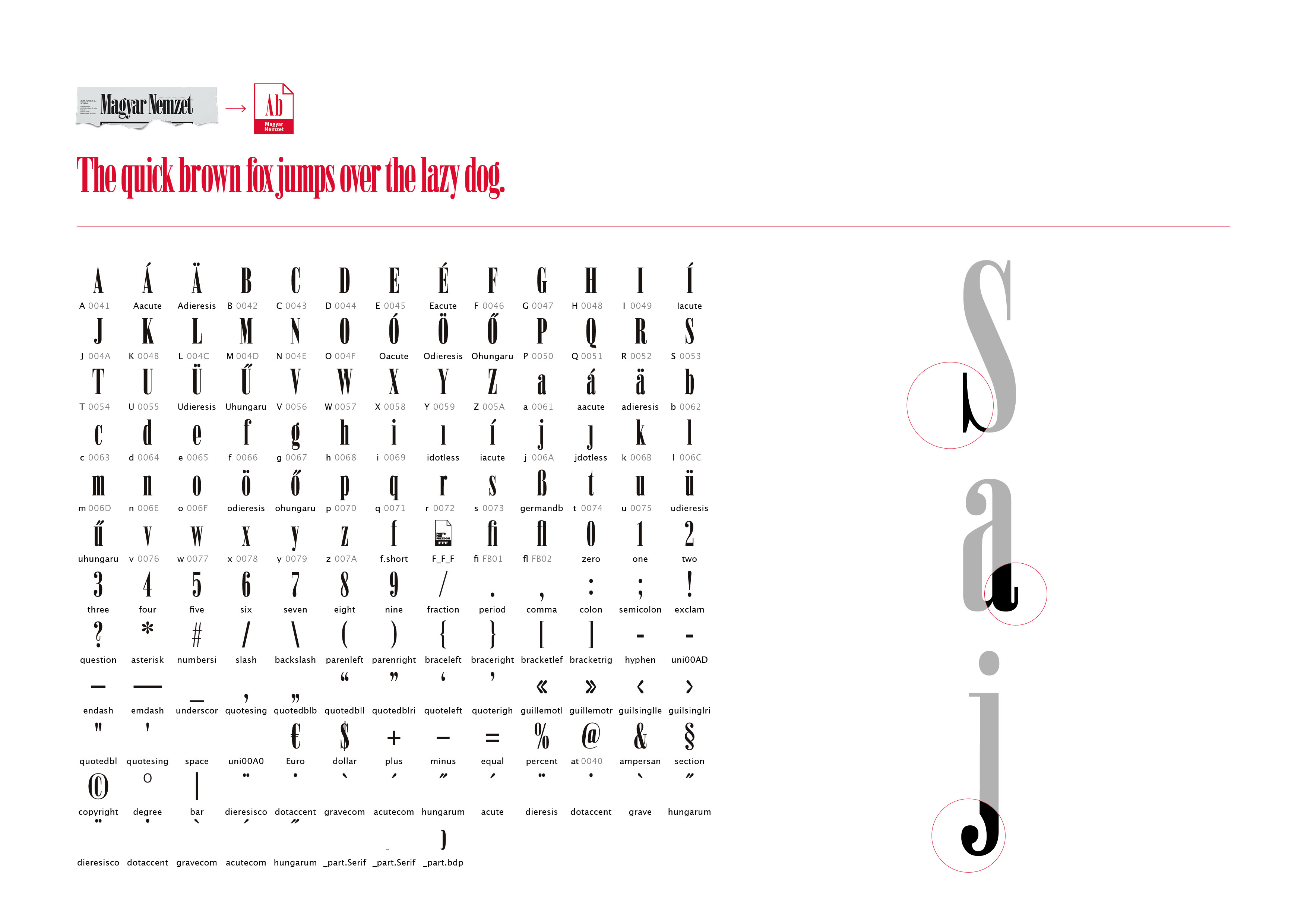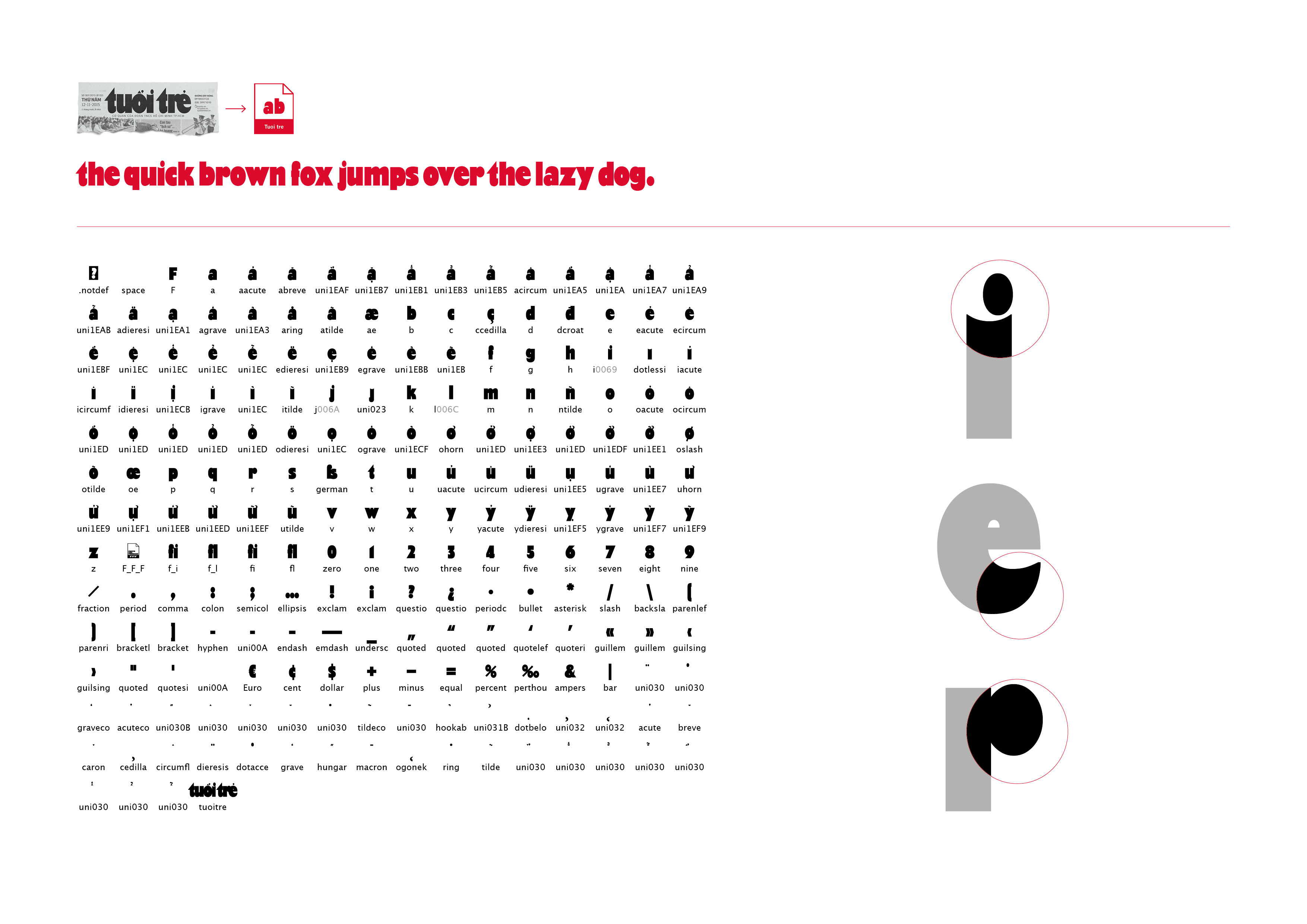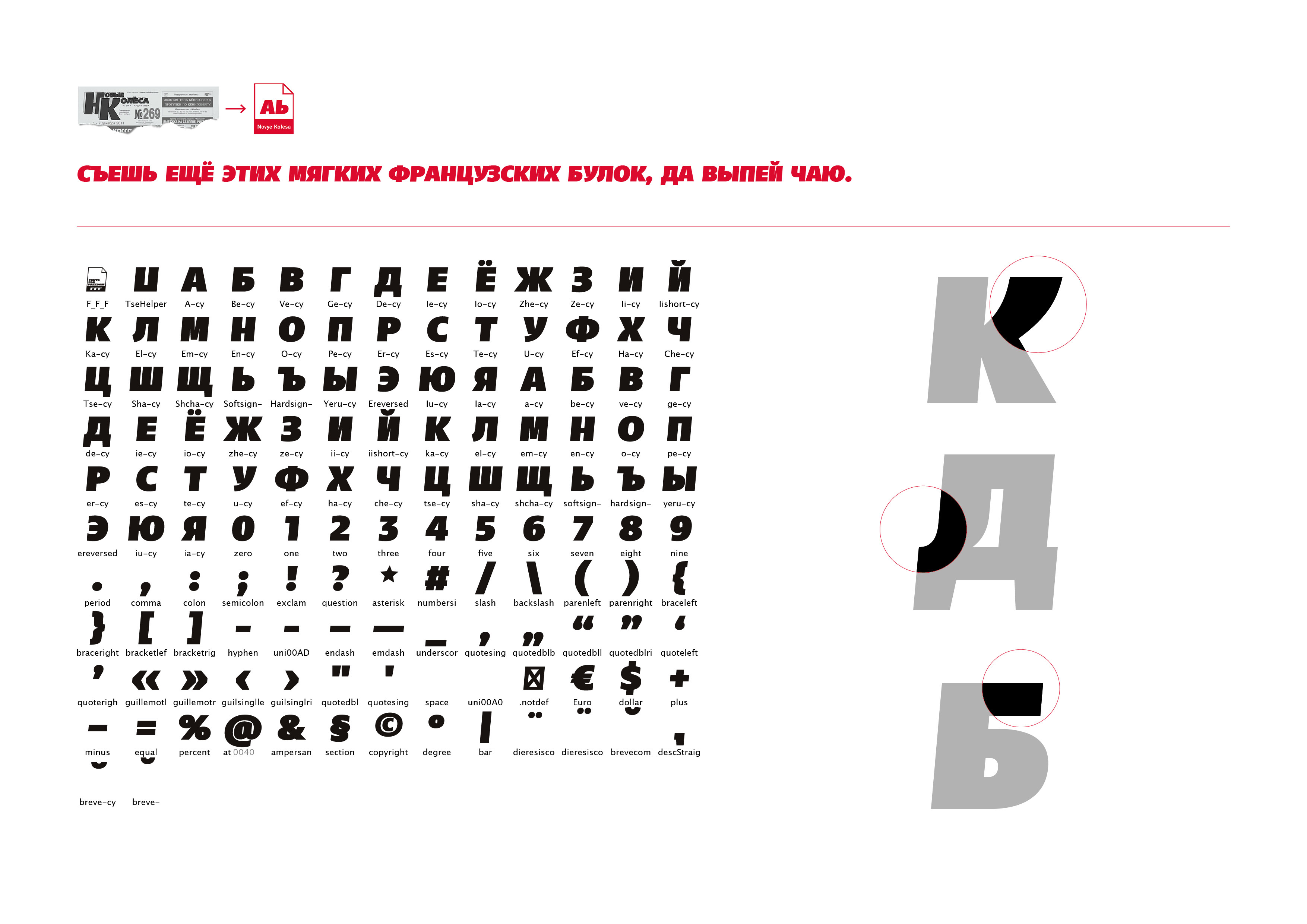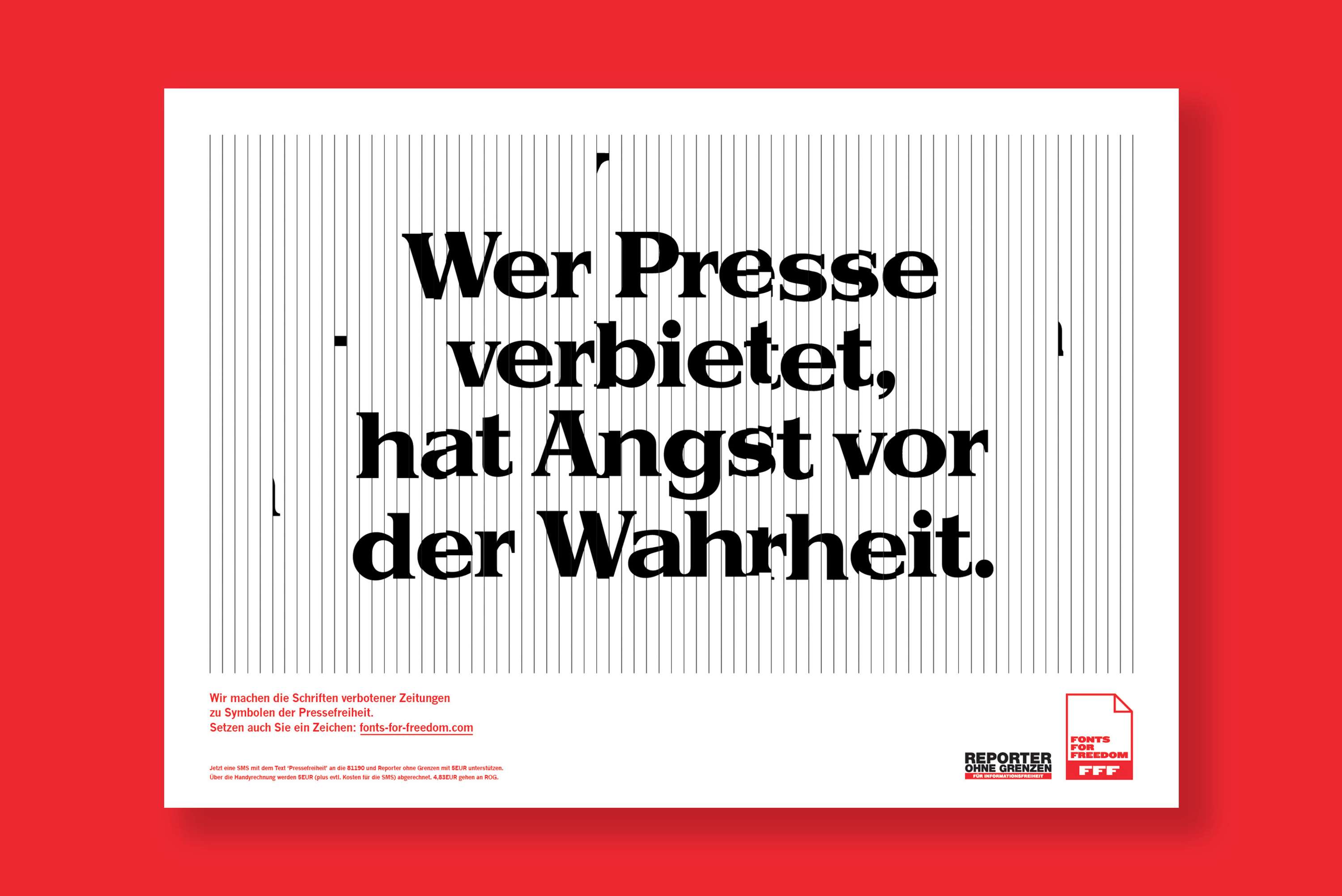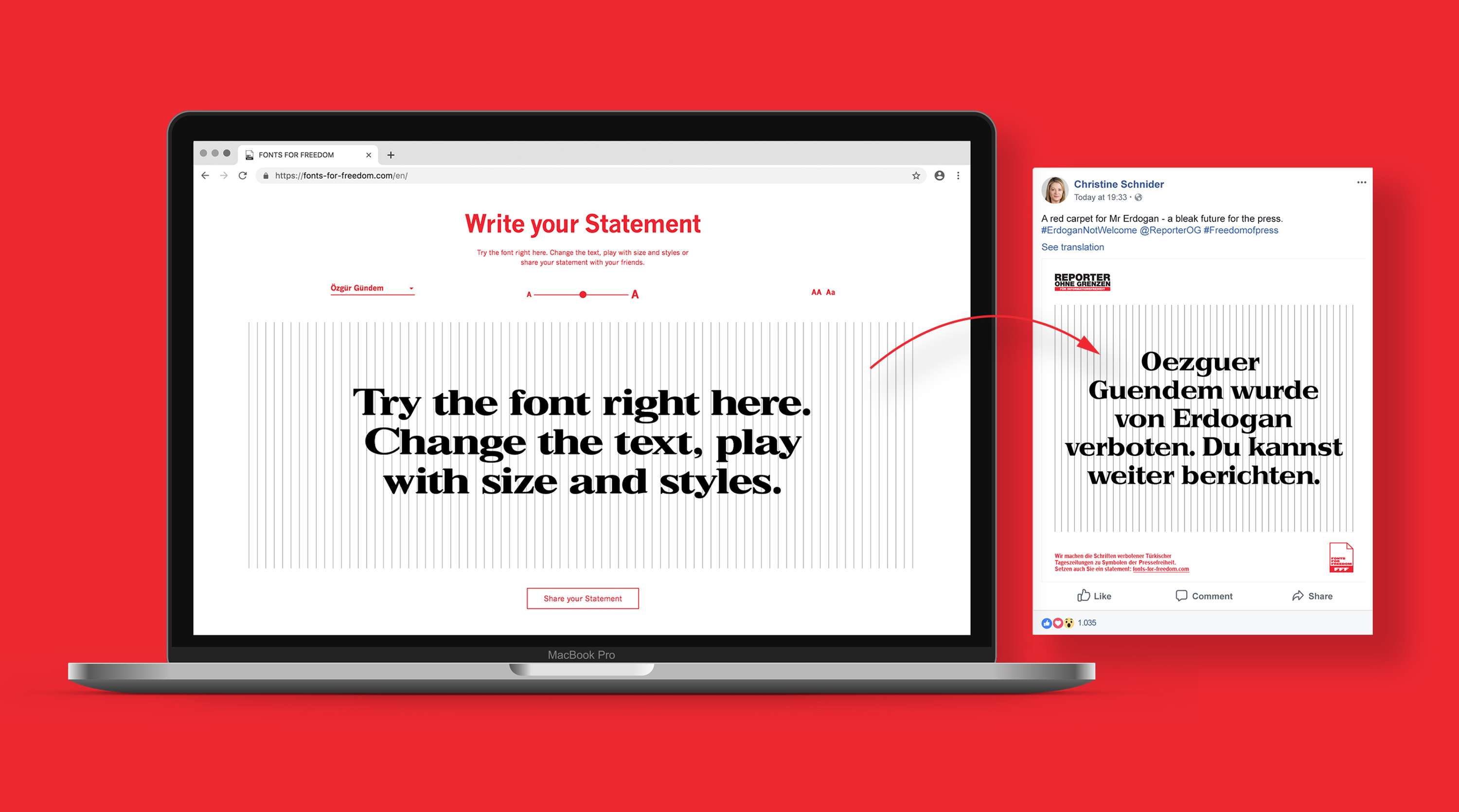Fonts for Freedom: typography is the real weaponry for Reporters without Borders
More and more media organizations are censored or closed and journalists arrested. In 2018 alone, over 140 media organisations around the world have been censored or closed including several daily newspapers. These are drastic measures taken by oppressive regimes to limit freedom of press and the reaction was inevitable and it is made of type, enter Fonts For Freedom.
Serviceplan Campaign Hamburg and Reporters without Borders Germany launched the campaign Fonts for Freedom to turn the fonts of prohibited newspapers into symbols of press freedom. With the help of typographers, the house fonts of 9 newspapers banned by governments in Turkey, Azerbaijan, Vietnam, Cambodia, Tanzania, Hungary and Russia have been reconstructed – countries with a track record of suppressing reporters and media outlets of truth.
When Turkish president Erdoğan visited Germany in 2018, he was confronted with billboards promoting press freedom as he left Berlin airport. The confronting headlines where set in exactly the fonts of the newspapers he had recently banned. As a result Fonts for Freedom has brought banned newspapers back into public focus around the world in 132 countries through 830 million contacts and 2.7 million interactions.
Fonts for Freedom proves that typography is the real weaponry in taking a stand for a better world as the banning of newspapers and publishers is a threat to democracy's most valuable asset: the right to express opinions freely. Recently, by presenting the 2019 Gutenberg Prize to Fonts for Freedom, the book city of Leipzig paid tribute to this highly topical project, a typographic initiative which takes a stand against the increasing restriction of press freedom and freedom of expression all over the world.
“The NGO’s work is making banned newspapers and the courage of journalists the focus of public attention – and with them the topic of censorship. At the same time, Fonts for Freedom is making typography an ambassador for free speech and interpreting the tradition of the Gutenberg Prize in a contemporary manner. Just as they were 550 years ago, reproduced letters are still symbolic of freedom of expression. Banning the word constitutes a threat to freedom” notes the German National Library in Leipzig which runs an exhibition on FFF through the 21st of December 2019.
The exhibition shows the many campaigns by the initiative Fonts for Freedom featuring poster campaigns marking Turkish president Recep Erdoğan’s visit to Berlin, banned newspapers, and film documentaries. Reporters Without Borders has put together a newspaper, especially for the exhibition which describes the various campaigns by Fonts for Freedom and places them in a historical context. Visitors can take this newspaper home with them and thus help spread the idea.
In terms of content, the presentation links with the permanent media history exhibition at the German Museum of Books and Writing, which devotes an important section to the subject of censorship. 20 biographies of censored books dating from the 16th century to the present day testify not least to the dual nature of censorship: firstly, as an – in extreme cases deadly – curtailment of press freedom and freedom of opinion by ideological hubris and autocratic monopolies on power, and secondly as a measure to preserve personal rights and protect young people. The exhibition, therefore, aims to inspire visitors to reflect on freedom of expression and discuss its importance for democracy.
Be involved and take a stand against oppression by writing your personal statement for press freedom online in one of the reconstructed fonts or donate to the campaign here.
Typeroom endorses FFF and its agenda and so should you.
Tags/ inspiration, exhibition, typefaces, gutenberg, posters, campaign, fonts, leipzig, award, initiative, library, oppression, freedom of speech, ngo, serviceplan, fonts for freedom, erdogan





